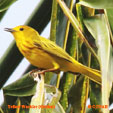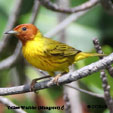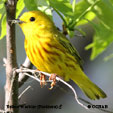North American Bird Search Box
This search box can be used to find bird species using bird's english, french or latin name, or to identify bird by its 4 letter Alpha Code
Field Guide for all the Birds of North America
Yellow Warbler
4 Letter (english names) Alpha Code: YEWA (1)
Paruline jaune
Setophaga petechia
Information, images and range maps on over 1,000 birds of North America, including sub-species, vagrants, introduced birds and possibilities
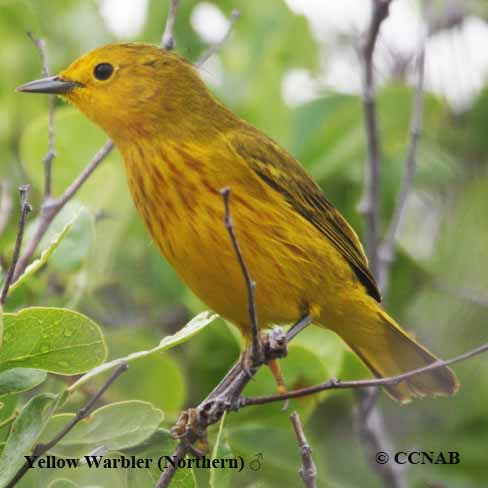
There are very many sub-species of the Yellow Warbler. These can be combined into three groups, starting with the Yellow Warbler (Northern). It is the most common sub-species or race among the group. It is seen throughout the North American continent. Then, there is the Yellow Warbler (Mangrove), and as the name suggests, it is found in the mangroves, mostly along the coastlines of Mexico and into the Central American countries. It has been reported in the summer months in the southeastern areas of Texas. The Yellow Warbler (Golden) is found on most of the Caribbean islands. It is very similar looking to the Yellow Warbler (Northern). One needs to see its reddish-orange crown to identify it. Small numbers of this race have been reported in the southern regions of the state of Florida.
North American Bird Calls
- Click here
- Summer
- Year Around
- Winter
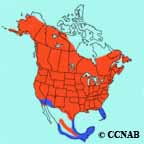
This warbler in general, is one of the most commonly seen warblers in its' group. The race seen in North America is usually seen along the edges of farm fields preferring bushes and smaller trees. It is usually seen around water or close to it.
Reference to Other Bird Site:
ABA - American Birding Association This site represents an organization that maintains official records of all birds species that have been proven to have been seen inside the perimeters of the North American Continent and the surrounding bodies of water. Regular revised versions are posted to keep the bird list current at all times. This is the list used by all serious birders over their lifetime. You may be aware of the movie called the "Big Year". It was with this list that all the competing birders used in an attempt to set a new record as to how many bird species that could be seen by an individual birder in one calendar year.
